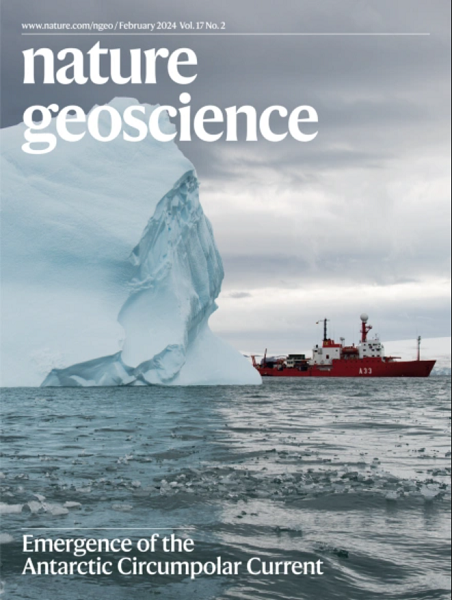Cropland expansion reduces biogenic secondary organic aerosol and associated radiative cooling
IF 16.1
1区 地球科学
Q1 GEOSCIENCES, MULTIDISCIPLINARY
引用次数: 0
Abstract
Cropland expansion has been the most notable change in global land use since industrialization. However, assessments of radiative forcing from land-use change have generally neglected the effects of cropland expansion on secondary organic aerosol. Here we perform a series of cropland expansion sensitivity experiments with an Earth system model that incorporates advanced secondary organic aerosol processes, including organic new particle formation. Our model results show an ~ 10% decrease in biogenic secondary organic aerosol burden due to cropland expansion since industrialization. This has reduced radiation scattering and cloud droplet formation associated with secondary organic aerosol, leading to a 146 ± 112 mW m−2 decline in its radiative cooling forcing, equivalent to 8% of CO2-induced radiative warming forcing since industrialization. The radiative impact is mainly attributed to the transition from evergreen and deciduous broadleaf forests to croplands. The radiative impacts are projected to increase by approximately 50% under future climate warming and reduced anthropogenic aerosol and precursor gas emissions, due to changes in biogenic emission intensity and background cloud condensation nuclei concentration. Policies addressing food security and climate change should account for the radiative impact of biogenic secondary organic aerosol from cropland expansion. Model simulations suggest that cropland expansion since industrialization has reduced atmospheric biogenic secondary organic aerosol by 10% and its associated radiative cooling effect by 11%.


农田扩张减少了生物次生有机气溶胶和相关的辐射冷却
耕地扩张是工业化以来全球土地利用最显著的变化。然而,对土地利用变化造成的辐射强迫的评估通常忽略了耕地扩张对次生有机气溶胶的影响。在这里,我们使用地球系统模型进行了一系列农田扩张敏感性实验,该模型包含先进的二次有机气溶胶过程,包括有机新颗粒的形成。我们的模式结果显示,自工业化以来,由于农田的扩张,生物源性次生有机气溶胶负担减少了~ 10%。这减少了与二次有机气溶胶相关的辐射散射和云滴形成,导致其辐射冷却强迫下降了146±112 mW m - 2,相当于工业化以来二氧化碳引起的辐射变暖强迫的8%。辐射影响主要来自于常绿落叶阔叶林向农田的转变。在未来气候变暖和人为气溶胶和前体气体排放减少的情况下,由于生物源排放强度和本底云凝结核浓度的变化,预计辐射影响将增加约50%。解决粮食安全和气候变化问题的政策应考虑到农田扩张产生的次生有机气溶胶的辐射影响。
本文章由计算机程序翻译,如有差异,请以英文原文为准。
求助全文
约1分钟内获得全文
求助全文
来源期刊

Nature Geoscience
地学-地球科学综合
CiteScore
26.70
自引率
1.60%
发文量
187
审稿时长
3.3 months
期刊介绍:
Nature Geoscience is a monthly interdisciplinary journal that gathers top-tier research spanning Earth Sciences and related fields.
The journal covers all geoscience disciplines, including fieldwork, modeling, and theoretical studies.
Topics include atmospheric science, biogeochemistry, climate science, geobiology, geochemistry, geoinformatics, remote sensing, geology, geomagnetism, paleomagnetism, geomorphology, geophysics, glaciology, hydrology, limnology, mineralogy, oceanography, paleontology, paleoclimatology, paleoceanography, petrology, planetary science, seismology, space physics, tectonics, and volcanology.
Nature Geoscience upholds its commitment to publishing significant, high-quality Earth Sciences research through fair, rapid, and rigorous peer review, overseen by a team of full-time professional editors.
 求助内容:
求助内容: 应助结果提醒方式:
应助结果提醒方式:


